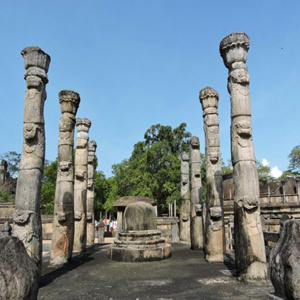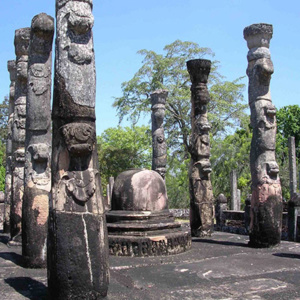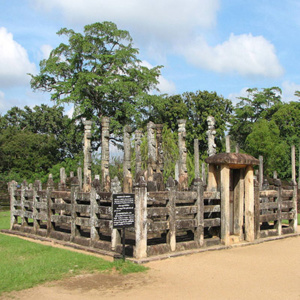


nissanka-lata-mandapa
nissanka-lata-mandapa-polonnaruwa
nissanka-lata-mandapaya
Nissanka Latha Mandapaya is a top-class masterpiece. Located in Polonnaruwa’s ancient town, this magnificent monument vividly depicts the amazing skill of the ancient stone carvers of Sri Lanka. This site was constructed between 1187 and 1196 by King Nissanka Malla who reigned on the island. It is thought that the monument named after him gave the king refuge as he listened to pirith or chanting Buddhist doctrines. This is attested by the details provided on a stone inscription on the site.
Nissanka Latha Mandapaya consists of an elevated stone platform and elaborately sculpted stone pillars. The pillars of stone are of amazing beauty. In each column is sculpted a crown in the form of a lotus bud. There is also a distinctive shape in these columns. In three locations they are curved, resembling the stem at the top of the lotus flower.
On the stone platform there are eight such granite pillars, each with a height of about 8 feet. The stone pillars in the ancient times would have backed a roof. This roof’s traces have disappeared in the winds of time. A tiny stupa in the center of Nissanka Latha Mandapaya is to be found. Today, only this stupa’s base continues.
King Nissanka Malla was a monarch who had a great appreciation for art and the culture of Sri Lanka. It was seen during his reign that he always built temples and other beautiful places some of which are all relics now and some of which are not visible. It is only natural that one can think of the past with great gratitude to these ancient Kings who built such beautiful sturdy structures such as the Nissanka Latha Pandapaya, which today is only slightly visible, but the area is indeed a revelation of what it was in the past.


